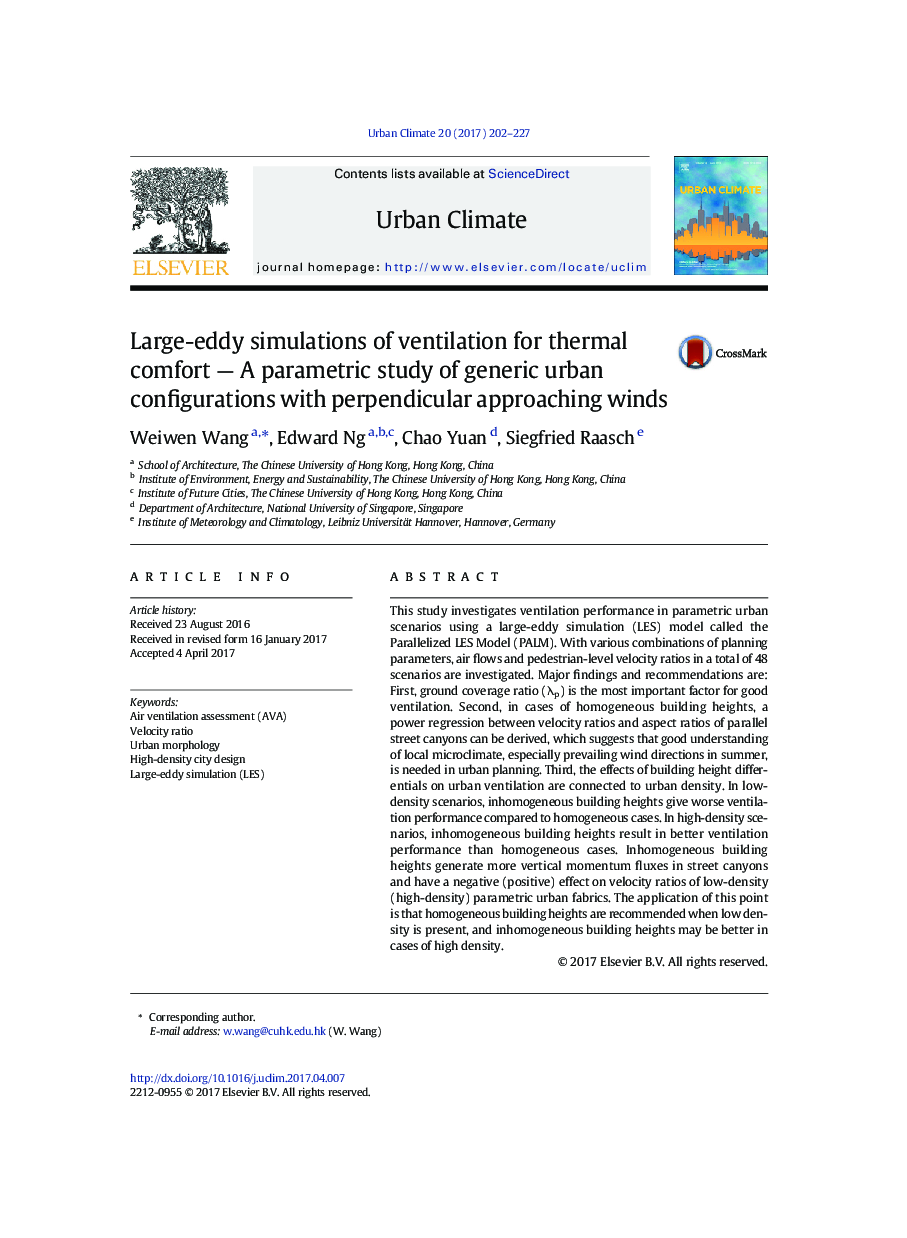| کد مقاله | کد نشریه | سال انتشار | مقاله انگلیسی | نسخه تمام متن |
|---|---|---|---|---|
| 6464503 | 1422843 | 2017 | 26 صفحه PDF | دانلود رایگان |
- Ventilation in 48 parametric scenarios is studied using large-eddy simulations.
- Ground coverage ratio is the most important factor for urban ventilation.
- A power regression between ventilation and street canyon aspect ratio is derived.
- Effects of building height differential are connected to urban density.
This study investigates ventilation performance in parametric urban scenarios using a large-eddy simulation (LES) model called the Parallelized LES Model (PALM). With various combinations of planning parameters, air flows and pedestrian-level velocity ratios in a total of 48 scenarios are investigated. Major findings and recommendations are: First, ground coverage ratio (λp) is the most important factor for good ventilation. Second, in cases of homogeneous building heights, a power regression between velocity ratios and aspect ratios of parallel street canyons can be derived, which suggests that good understanding of local microclimate, especially prevailing wind directions in summer, is needed in urban planning. Third, the effects of building height differentials on urban ventilation are connected to urban density. In low-density scenarios, inhomogeneous building heights give worse ventilation performance compared to homogeneous cases. In high-density scenarios, inhomogeneous building heights result in better ventilation performance than homogeneous cases. Inhomogeneous building heights generate more vertical momentum fluxes in street canyons and have a negative (positive) effect on velocity ratios of low-density (high-density) parametric urban fabrics. The application of this point is that homogeneous building heights are recommended when low density is present, and inhomogeneous building heights may be better in cases of high density.
Journal: Urban Climate - Volume 20, June 2017, Pages 202-227
